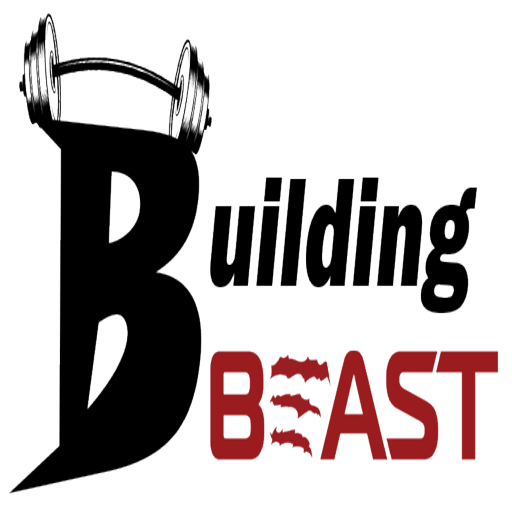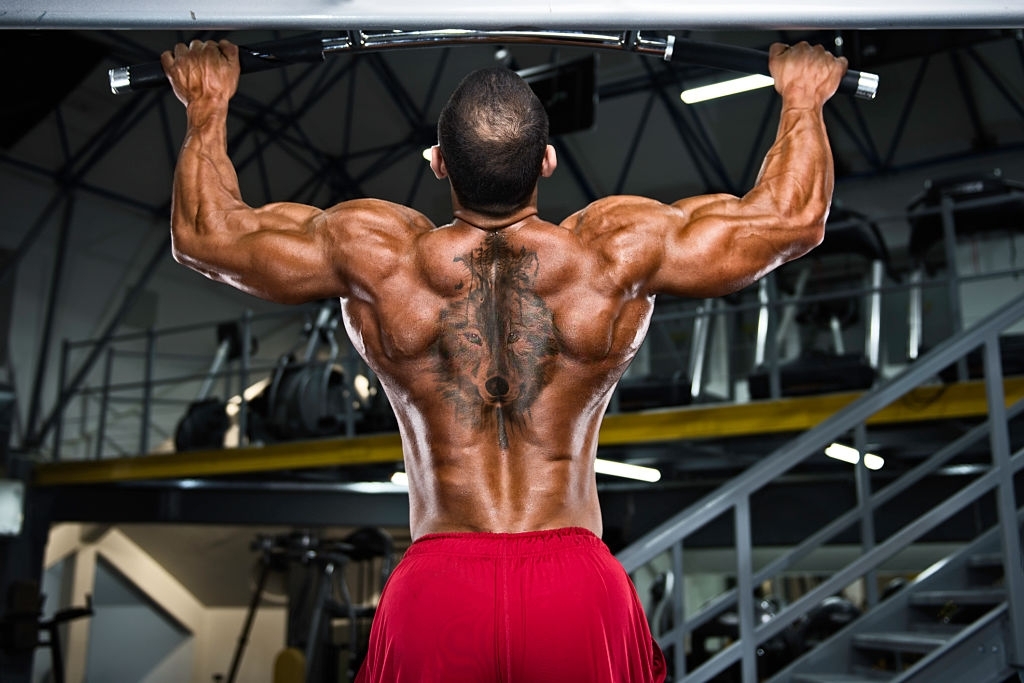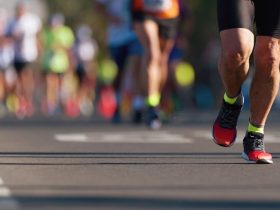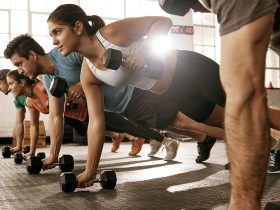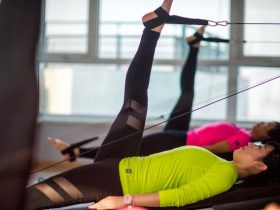INTRODUCTION
While planning our workout session, we often miss out on some of the essential muscles of our body. One such neglected group of muscles is the rear delt muscles. The rear delts are of prime importance for the composition of the upper body. Even though the fanatics pay attention to the minute details of their body, they often overlook the faulty training processes they carry on that hamper the development of the rear delt. Here we are discussing the back delt exercises and the correct procedures of those exercises. Clap for the reps!
REAR DELT ANATOMY 101
It is essential to understand the interplay of bones and muscles underneath the skin to certain perfect body regions. One of the significant confusions is related to the positions of the rear delt muscles. Some say rear delt is nothing but the back simply because it has ‘rear’ in its name. At the same time, others like to remain fixed with the notion that the rear delt is the shoulders. The correct answer is somewhere in between these two extremes.
In the language of the physiologists, the rear delts are the ‘Posterior Deltoids.’ These muscle fibres are situated at the backside of our shoulders, originating from the shoulder blades or the Scapula. Accompanied by the lateral and anterior delt muscles, the rear delts merge into the bone, forming the humerus’s upper arm.
The following big query after the position of rear delts is about the function of the muscle. Well, to put it simply, the posterior deltoids are primarily responsible for pulling our shoulders back, restricting them from hunching. Now you can imagine what can go wrong with a faulty rear delt routine!
WHO IS HUNCHING FORWARD?
The rear delts are significantly crucial in the maintenance of a good posture. Or maybe a healthy posture. A noticeable amount of upper body hunch depicts an immoderate shoulder and back stress. No one likes a hunched back and a rounded shoulder. Psychologically speaking, hunched back put forward an image of being timid and fearful. And it is not in our plans.
The sedentary lifestyle of the millennials is to blame, at least for some part of it. The hunched body posture in front of computers and other electronics is a common sight now. Outside the gym and workout sessions, it is our choice of lifestyle. It determines what our body will feel like, from outside and from outside.
Sweating out for two hours straight into the gym and working in front of the laptop with a hunched back will not fix our body posture. Moreover, those who are adopting this body posture are unknowingly increasing their chances of injury.
EXCESSIVE WORKOUT HUNCH
Not only a poor posture is going to cause hunched back, and rounded shoulders, but a wrong choice of workout routines may also result in the same. The craze of bulging out the muscles and striping the packs in front is taking a toll. We already know that the gym rats would go for a chest workout session any day over leg day or arm day.
Excessive workout of the frontal plane may lead to noticeable hunch and rounded shoulders. In doing so, we are stretching the anterior muscles, increasing their size relative to the posterior one. A disequilibrium is seen between the stretching of these muscles. The posterior muscles are consequently becoming weaker, making them unable to pull back the shoulders in their original place.
Read and find out where are your faulty behaviours are weakening your rear delt muscles here.
THE MOST EFFECTIVE REAR DELT EXERCISES
Pointing out the reasons for a problem reduces the difficulty by half. Now we know which behavioural errors cause hunched backs and rounded shoulders. We can state the solution in a straightforward statement: paying more attention to the rear delts group of muscles. The attention to the forces should not be limited to the workout period but should also be extended to the lifestyle.
One of the most effective exercises that strengthen the rear delt muscle is ‘rear delt flys.’Fitness trainers also recommend inverted row and shoulder blade retract. Here is what you need to know:
- The rear delt flys: Make a T with your arms stretched to the two extreme ends holding a dynamic band. The next step will be closing the shoulders by bringing the components closer and opening up, taking the initial position. Sounds easy! It may be a little tough with your dynamic band, but we know you will master it soon. And when a single active band seems too light, you can go for two bands to increase the stress. Two is always better than one. Check workout tutorial here.
- The inverted row: This particular exercise is advised to be done under expert supervision. By keeping the feet on the ground, the power straps should be pulled with maximum strength so that the shoulders close behind. In the next step, hold your body by rowing towards the hands. The fitness experts say that the more you throw your hands up, the more you sweat your muscles. Get ready to flaunt that toned upper body. Check workout tutorial here.
- The shoulder blade retracts: This is also famous by the name of fly combo and is a mixture of the previous two exercises. The dynamic bands and power straps are used in unison to carry out this exercise for the rear delt. This exercise is a hybrid of isometric and dynamic workouts.
The power strap is held in one hand, and the dynamic belt is stored in the other. The arm holding the dynamic belt is occupied with the rear delt fly’s exercise- the dynamic working. Isometric working is seen in the hand carrying the power strap.
To get massive shoulders, try out this Ultimate Deltoid Exercise.
REAR DELT FLY MACHINE
The rear delt fly machines are common equipment you will easily find in any gym. Whether the exercises without the involvement of machines were better or the engagement of machines amplifies the results, is a matter of debate. We were hoping you could make an informed decision, and hence here are some of the pros and cons of the rear delt fly or reverse fly machine.
Read on to get bonus tips on using reverse fly machines from experts. The rear delt fly machine is helps getting rid of the rounded shoulders by developing the posterior deltoid muscles. Moreover, people working out with rear delt flys are found to be smooth with the compound sets of exercises. Undoubtedly, a better posture will follow with vanishing rounds of the shoulders.
Working out with the rear delt machines reduced the chances of injury. As the device does not allow the inadequate flow of hand motions, you are much less prone to any accidents or damage. Another plus of using the machine is that it does not claim the attention of your torso.
But we are inherently provided with the capacity to go wrong with almost everything. Here are some of the things you should absolutely avoid:
- No extra force should be used for gripping the handles of rear delt fly machines
- Loading on excess weight beyond your capacity is a big NO
- You don’t need to shrug your shoulders upward during the exercise
- Concentrate on the movement of your shoulders and not the traps
- A slow and controlled sequence of exercise should be followed. No hurry there!
Learn about the variations of rear delt exercises you can kickstart with a rear delt fly’s machine.
REAR DELTS EXERCISES WITH DUMBBELLS
Working out should not be a luxury of the gymgoers only. Grab your dumbbells and start toning those deltoid muscles resting at the back of your shoulders. Here are five quick and easy tips for you:
- Arm bent rows: You can easily add this new exercise to your list of activities for back and shoulder day. You will just be needing a dumbbell and a bench to start this. Firstly, you need to rest one leg and one arm on the bench. The other leg should be placed slightly backwards to gain support.
Hold a dumbbell in your free arm and start pulling it towards your ribcage. A right-angle must form between your forearm and hind arm when you are removing the dumbbell. 10 to 12 reps for each arm are enough for the day. - Standing bent lateral raises: Stand with two lightweight dumbbells (initially) so that the hands are close to each other. Bent down from the waist and start raising the dumbbells just like a butterfly spread its wings. Along with the rear delt muscle and the middle deltoids, the shoulder girdles are also strengthened in the exercise.In one workout session, three sets of standing bent lateral raises are enough, with 10 to 12 reps in each set. Do not forget to take a staple 45 seconds of rest between each group. Let your body catch some air.
- Arnold Press: This exercise follows a straightforward procedure. You only have to stand or sit with two dumbbells at your service. Hold the dumbbells in each hand and curl the hands to your shoulder length. Remember that your palms must be facing you. You can repeat this 12-15 times. Take a break of 20 to 30 seconds if it feels too intense.
- Barbell high row: When you are done with the dumbbells, reach for the barbells insight. You can go for barbells high row if you want to pair rear delts with biceps development. They prove to be an excellent combination.A 3-set plan for each workout session is just fine for your rear deltoids and biceps. Go for 10 to 12 reps in each and 90 seconds rest between each set.
Learn about other kinds of rear delt exercises here.
CAN REAR DELTS BE DONE AT HOME?
Yes, why not! Rear deltoid muscles workouts can be carried out in the comfort of your home. The structure of male and female bodies demands different forms of exercise patterns (Now now! We are not discriminating here). Thus, specific workout plans prove to be more beneficial for the ladies in the house. Some of the most effective strategies for such exercises are:
- The dumbbell raises: More specifically, this is also called the Y-T-I raise, after the shape of the alphabets, the body forms while working out. You can use either a stability ball or bench for this. Lie face down on them and first raise your arms to form a Y. Hold for few seconds and then create a T. Finally, include an I. Repeat the cycle 3-5 times. Remember to squeeze your shoulders backwards during the entire period.
- Stability ball exercise: Another famous tactic to straighten your hunch and flatten the rounded shoulder is working out with a stability ball. Take a cobra-like structure by sticking your arms at your sides and balancing over the ball with your belly. Try to squeeze the should backwards and pull your neck outward (just like a cobra would do). Hold this position for few minutes.
CONCLUSION
During the course of our exercise plans, we often ignore some of the major muscles of the body. As the physiologists would love to say, the rear delts or the posterior deltoid is one such overlooked group of muscles. The faulty exercise patterns are also causing significant damage to the rear delts. The obvious recently of such negligence is a hunched back and rounded shoulders.
There are a bunch of exercises prescribed to deal with the hunched posture of the body. Fitness experts concentrate on gaining an equilibrium strength between the posterior deltoid muscle and the anterior deltoid muscle. The rear delt fly’s workout is the most widely accepted remedy for such posture demands. It is also easy to proceed with.
The power strap exercises are the next best thing, though it requires expert supervision. A hybrid of isometric and dynamic workouts is also helpful for reducing the hunch of our back. Go for all the extra reps and walk out with a dynamic posture!

